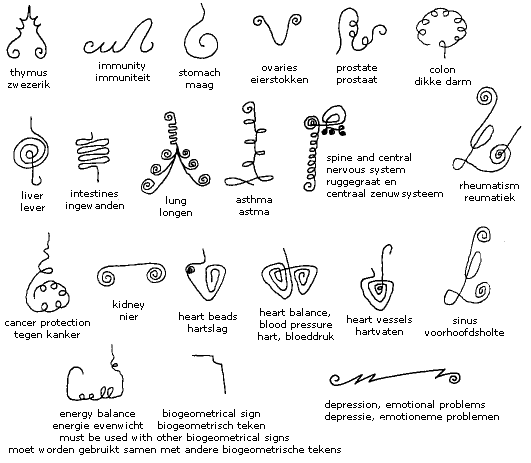|

Sigils are graphic symbols that identify and
represent spiritual beings. Often, but not always,
they are generated from the names of spirits using
mechanical methods, so that each letter in the name
gives rise to a particular part of the symbol. They
are usually simple, two-dimensional abstract
designs, and may be either black and white or
colored. The sigil is the design itself, not the
surface or thing upon which it is drawn, painted or
inscribed. In magic, a sigil is employed to summon
and control the spirit it represents during rituals,
or to infuse the presence or influence of the spirit
into a specific power object.
The word "sigil" is from the Latin sigillum, meaning
a little seal or signet. From ancient times until a
few centuries ago, identity and authority were
verified in largely illiterate cultures by means of
personal, family or state seals that took the forms
of small cylinders, blocks, stamps or rings. These
were impressed into clay, and later into wax, to
leave a distinct symbol by which the legitimacy of
the bearer or the object impressed with the seal
were confirmed. It seems to me probable that the use
of sigils to identify spirits has its origins in
this familiar and widespread practice.
In magic, the name of a spirit embodies the identity
and power of the spirit. By knowing and controlling
the name, the magician is able to control the
spirit. This is the basis of the god-magic of
ancient Egypt. The sigil is a graphic form of the
name. The name is manipulated upon the living breath
by means of chants, mantras, invocations,
imprecations, execrations, prayers, hymns and
similar vocal forms used in magic. The sigil is
manipulated within the imagination by means of
meditation, concentration, and creative
visualization.
More commonly, sigils are associated in the average
person's mind with the lower spirits and demons. No
medieval grimoire, such as the Goetia, would be
complete without its set of demonic sigils. Perhaps
this is because the lower spirits, who were often
summoned for mundane purposes such as causing injury
to others or finding treasure, are more rebellious
and require instruments of control and punishment.
By inflicting injury upon the demon's inscribed
sigil, the magician was able to cause discomfort or
pain to the spirit it represented. This was done in
such ways as piercing the sigil with a knife or pin,
compressing it beneath a weight, placing it inside a
Bible, standing upon it, burying it, hanging it over
rising incense smoke, binding it with cord, striking
it with the flat of a sword blade, or subjecting it
to the heat from open flame. Often the mere threat
to destroy the sigil caused the demon to comply. Do
you want sigils for you? Contact us.
|








